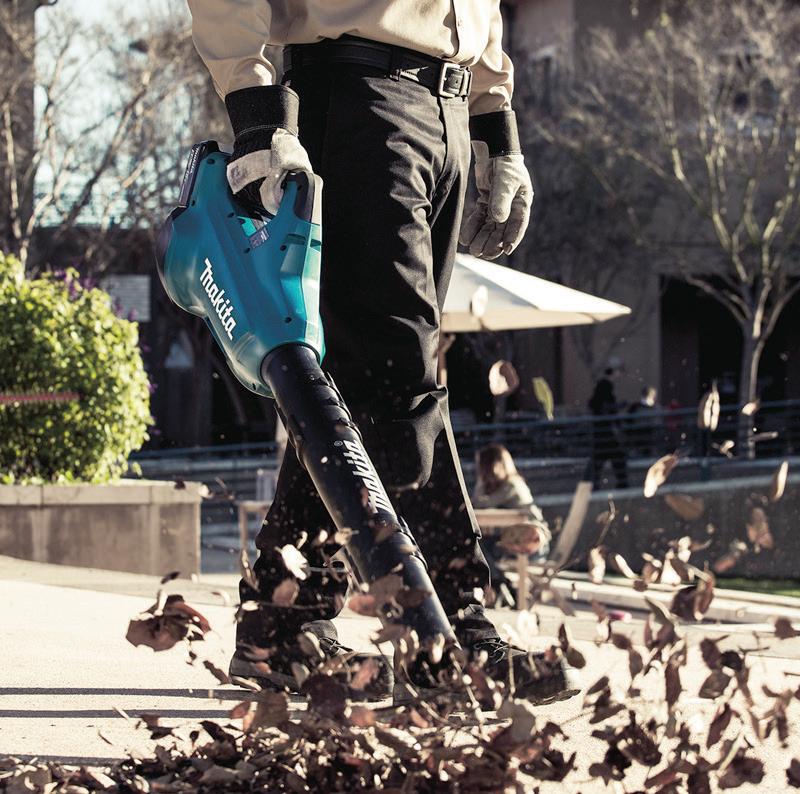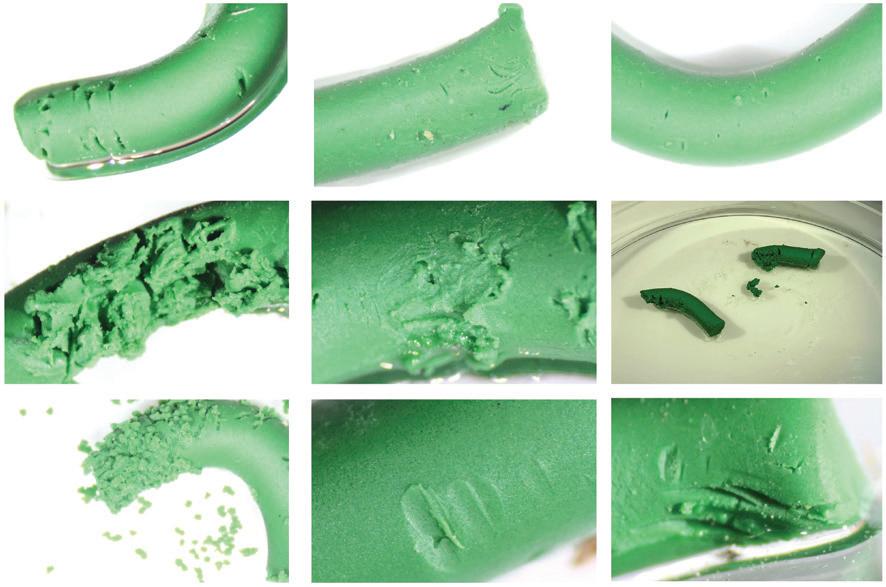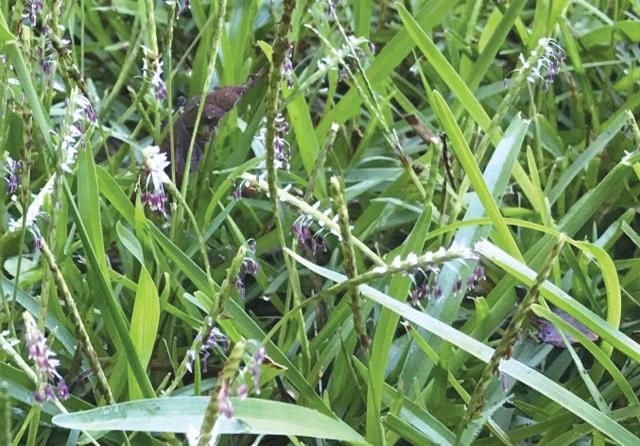
10 minute read
2021 Sod Producers Report Annual survey examines inventory and price
2021 Sod Producers Report
Annual survey examines inventory and price
by Clint Waltz, The University of Georgia

The Georgia Urban Ag. Council conducted
their twenty-sixth survey of sod producers. The purpose of the survey was to determine the status of inventory levels and projected price changes for spring 2021.
Survey details
The survey obtained estimates of the inventory for bermudagrass, zoysiagrass, centipedegrass, St. Augustinegrass, and tall fescue based on estimated sales for the first five months of 2021 as excellent (more than 10% of demand), adequate (equal to demand), and poor (more than 10% shortage). Pricing information
Due to an insufficient sampling size of the included farm price and price for truckload industry, there was not a 2020 sod survey. orders to the Atlanta area or within 100 miles
This year’s results will be compared to 2019 of the farm, all costs were reported as price per responses. In 2021, 20 producers participated in square foot of sod. the survey, representing farm sizes which were: 4 4 4 4 less than 300 acres (7 participants) 300 to 600 acres (7 participants) 601 to 900 acres (2 participants) more than 900 acres (4 participants)
Figure 1.
Percentage of bermudagrass producers projecting adequate to excellent supply for the past five years.*
Figure 2.
Percentage of zoysiagrass producers projecting adequate to excellent supply for the past five years.*
Inventory levels
Bermudagrass is being grown by all the surveyed producers. Fifty-five percent of the producers rated their inventory as adequate to excellent this year (Figure 1). Two-thirds of the growers with greater than 600 acres expect an adequate to excellent bermudagrass supply, while half of the producers with 600 acres or less project having sufficient inventories.
For early 2021, bermudagrass may be in shorter supply than previous years.
The number of producers growing zoysiagrass (80%) was like previous years. Zoysiagrass is a popular species with many commercially available cultivars. There are at least fifteen zoysiagrass cultivars being grown in Georgia. Of the producers responding, 44% estimate an adequate to excellent inventory, which is lower than 2019 (Figure 2). Of the larger producers, half have a poor supply moving into 2021. Insufficient zoysiagrass inventory is greater (60%) for producers with less than 600 acres in production.
Of the 20 producers surveyed 11 (55%) were growers of centipedegrass. Fifty-five percent of the growers had adequate to excellent inventory compared to 80% in 2019, and 75% in 2018. The larger growers, half with
greater than 600 acres, expect an adequate centipedegrass supply. St. Augustinegrass is being grown by 5 of the 20 producers surveyed. Eighty percent reported a sufficient supply. Similar to previous years, tall fescue was grown by 45% of producers. Sixty-seven percent of tall fescue producers reported excellent to adequate inventory. This is a slight decrease relative to the previous 15 years tall fescue has been surveyed. While it appears tall fescue inventory will likely meet demand, there is a greater potential for limited supply relative to the past.
Sod prices
The on-the-farm and delivered prices of all species are expected to increase in 2021 compared to 2019.
Price increases could range from 2% to 8% over 2019 prices (Table 1).
While greater than the 2019 price, bermudagrass will have the lowest increase in price relative to the other four species. Figure 3 provides a five-year perspective of delivered sod prices. The average price per square foot for a truckload of bermudagrass delivered to the Atlanta area, or within 100 miles of the farm, was higher relative to 2019 (Table 1). The 2021 survey indicated prices varied from 23.0 cents to 36.0 cents, with an average price of 28.6 cents (Table 2). The average price in 2019 was 28.1 cents per square foot and ranged from 21.0 cents to 39.0 cents.
The 2021 average price for a delivered truckload of zoysiagrass was greater than 2019 levels. The average price of delivered zoysiagrass in 2021 was 52.4 cents and ranged from 39.0 to 67.0 cents. In 2019 zoysiagrass prices ranged from 38.0 to 68.0 cents and averaged 49.1 cents. Centipedegrass prices in 2021 ranged from 26.0 cents to 40.0 cents and averaged 32.5 cents, compared to 2019 when the average delivered price was 31.1 cents and ranged from 25.0 to 38.0 cents.

Table 1. Change in prices from Spring 2019 to 2021
Turfgrasses On-the-farm Delivered*
2019 2021 % change 2019 2021 % change --- cents / ft2 --- --- cents / ft2 ---
Bermudagrass 22.9 23.5 2.6 28.1 28.6 1.8 Zoysiagrass 42.6 45.9 7.7 49.1 52.4 6.7 Centipedegrass 25.2 27.2 7.9 31.1 32.5 4.5 Tall Fescue 27.9 28.6 2.5 32.4 34.7 7.1 St. Augustinegrass 42.5 44.0 3.5 47.3 50.7 7.2
* Delivered price includes freight and pallets. The delivered price included the Atlanta area or within 100 miles of the farm.
Table 2. Comparison: Farm to delivered prices, 2021
Turfgrasses On-the-farm Delivered*
Price (avg.) Range Price (avg.) Range -------------------------------------- cents / ft2 -------------------------------------------
Bermudagrass 23.5 15.0 - 30.0 28.6 23.0 - 36.0 Zoysiagrass 45.9 30.0 - 58.0 52.4 39.0 - 67.0 Centipedegrass 27.2 22.0 - 39.0 32.5 26.0 - 40.0 Tall Fescue 28.6 20.0 - 37.0 34.7 29.0 - 52.0 St. Augustinegrass 44.0 40.0 - 50.0 50.7 45.0 - 60.0
* Delivered price includes freight and pallets. The delivered price included the
Atlanta area or within 100 miles of the farm.
Figure 3.
Historical perspective of sod prices in Georgia, 2016 to 2021.
The 2021 average delivered price for tall fescue (34.7 cents) was 7% higher than 2019 (32.4 cents). This year, prices ranged from 29.0 cents to 52.0 cents.
Table 3. Percentage of survey respondents that grow certified grass and the additional charge for certified grass
Growers with certified grass Growers that charge a premium
Year % n* % n* Average Range -------------- cents ---------------
2021 85 17 53 9 3.0 1.0 - 10.0 2019 65 11 82 9 2.3 2.0 - 4.0 2018 69 9 55 6 2.0 2.0 - 3.0 2017 71 15 85 11 4.0 2.0 - 10.0 2016 88 15 87 13 4.0 1.0 - 7.0
* Total number of respondents 20, 17, 13, 21, and 17 for 2021, 2019, 2018, 2017, and 2016 respectively.
Table 4. Historical freight rate for sod deliveries
Year
Range Average % Change --------------------- $ / mile -------------------- 2021 3.76 – 6.00 4.24 9.3 2019 3.83 - 5.00 3.88 8.4 2018 3.00 - 4.50 3.58 2.3 2017 1.25 – 5.00 3.50 -5.4 2016 3.00 - 4.50 3.70 -1.1
* Delivered price includes freight and pallets. The delivered price included the Atlanta area or within 100 miles of the farm.
The average price of delivered St. Augustinegrass in 2021 was 50.7 cents and ranged from 45.0 to 60.0 cents. In 2019, St. Augustinegrass prices ranged from 42.0 to 55.0 cents and averaged 47.3 cents.
Projected increases
Regarding grower price expectations, growers are not forecasting a significant price increase early 2021. 4 Seventy percent of bermudagrass producers expect steady prices while 25% foresee a price increase during the first five months. This is dissimilar to 2019 where growers forecast a decrease for the first five months. 4 For zoysiagrass, 59% of producers anticipate stable prices during the first five months of 2021; 41% of producers forecast higher prices, one with greater than 900 acres in total production.
4 4
For centipedegrass and tall fescue, greater than 63% of all producers expect prices to remain constant in 2021. St. Augustinegrass producers expect unchanging prices throughout 2021.
Certification
2021 had 17 producers representing 85% of the respondents with some certified grass on their farm (Table 3). Fifty-three percent of these growers charge a premium for certified grass, down from 82% in 2019. The remaining growers either do not place an added value on certified sod or do not participate in the certification program.
In 2021, the typical extra cost ranged from 1.0 to 10.0 cents per square foot and averaged 3.0 cents. This translates to between $10.00 and $50.00 on a 500 square foot pallet.
The price point where consumers (i.e. industry practitioners and homeowners) value varietal purity is unknown. Anecdotal estimates – informal survey of a several hundred participants – of homeowners and endconsumers suggests the value of a certified grass is likely greater than reported in this survey. When told of the benefits of certified sod, endusers indicated they are willing to pay more (e.g. $20 to $25 / 500 square foot pallet) to ensure varietal purity.
Freight, unloading fees, and fuel surcharge
Freight rates per mile shipped to Atlanta, or within 100 miles of the farm, rose in 2021 (Table 4). Costs ranged from $3.76 to $6.00 and averaged $4.24. A separate freight rate is charged by 47% of the respondents, this is greater than what was reported for 2019.
Three respondents (21%) reported charging an unloading fee in 2021, about the same as 2019. The minimum unloading fee ($75) was up from 2019 with producers now charging between $75 and $125. All producers will make additional drops on a load. In 2021, the low- and high-end charge was the same as 2019 at $25 and $150,
respectively. The average cost for additional drops in 2021 was $74.44; an increase from the 2019 cost of $67.86. No respondents reported adding a fuel surcharge to a load in 2021.
Markets
The 20 producers that participated in this survey estimated that nearly half the grass sold was to landscape contractors (Table 5). This industry segment continues to be the perennial leader and is consistent with national trends where landscape contractors are the largest marketing channel for horticulture and specialty crops (www.nass.usda.gov/Publications/ Highlights/2020/census-horticulture.pdf). Previously ranked 6th of 8, existing developers took the second position, accounting for 15% of sales in 2021.
Sod sales to brokers reversed a previous trend of increasing in rank. This may substantiate the strong sod sales of spring 2020 as Georgians sheltered in-place for the coronavirus pandemic, and producers being less reliant on a third party to sell their product.
Acreage in production
Like 2019, seven producers indicated they planned to add acres into production during 2021. The cumulative total for this year’s increase is approximately 600 acres. Comparing the responses from this survey with the UGA Agribusiness and Economic Development 2018 Farm Gate Value Report (https://caed.uga.edu/publications/georgiaagricultural-statistics.html#farm-gate) and the past two years Georgia Crop Improvement Association’s “Georgia Certified Turfgrass Buyers Guide” (www.georgiacrop.com/turfgrass) there has been a 3% to 4% annual increase in production over the past three years. Similarly, the USDA Census of Agriculture had a 4% increase in sod production acres from 2014 to 2019 (www.nass.usda.gov/Publications/ Highlights/2020/census-horticulture.pdf).
Summary
2021 will be a year of higher sod prices. With a potential of thin inventories for bermudagrass, zoysiagrass, and centipedegrass it can be speculated that prices will be greater than the increases forecast in this survey. It is hard to predict consumer demand for grass in early spring. But if spring 2021 has strong sod sales, similar to how the coronavirus pandemic affected spring 2020 sales, already low inventories could be pressured further resulting in producers adjusting prices accordingly.
Table 5. Ranking of industry segments for sale of turfgrass
Industry segments 2021 2019
Rank Average* Rank Average*
Landscape contractors 1 45.6 1 50.9 Existing developers 2 15.2 6 11.0 Golf courses 3 14.7 2 23.0 Garden centers 4 13.3 7 6.6 Homeowners 5 12.8 4 13.7 Brokers 6 10.6 3 14.4 Sports/athletic fields 7 10.0 5 12.6 Landscape designers 8 4.2 8 0.3
* Average percentage of total sales.
Bullet points from the 2021 Sod Producers Report
• 2021 will be a year of higher sod prices. • Supply of most warm-season turfgrasses may be limited in early 2021.
• Growers of bermudagrass, centipedegrass, tall fescue, and St.
Augustinegrass expect consistent prices through early 2021. • The average price for certified grass increased to 3.0 cents per square foot.
• On par with previous years, producers are considering adding acreage into production during 2021.
About the author
Clint Waltz is Professor and Turfgrass Extension Specialist at the University of Georgia campus in Griffin, GA.










